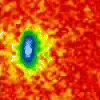
 |
A New Model Course in Quantum Mechanics for Scientists and Engineers |
Although QM is often viewed as an esoteric subject only of interest to theoretical physicists, it is the theory that permits us to understand many of the properties of matter that we observe every day, such as why glass is transparent and why copper conducts electricity and Styrofoam doesn’t. Quantum technology is the technology of the present ¾ and of the future. Devices such as lasers, medical imaging devices like MRI and PET, and the atomic clocks that make the GPS possible, all depend on the quantum nature of matter. Quantum mechanics will drive cutting-edge technology for years to come.
For most undergraduates, quantum mechanics as it is presently introduced in the junior year is more of a barrier to future work than an opening of new possibilities. Quantum courses today focus on an axiomatic approach whose relevance to the real world is obscure. This favors the small number of students motivated by mathematical elegance or by a desire to become research physicists. If we are to facilitate the creation of large numbers of new inventors and technological entrepreneurs, we must find a way to bring an understanding of the physical laws that govern the behavior of matter to more students.
In the past ten years, there have been a number of highly successful reform efforts in introductory university physics. The key to their success is shifting the focus from the content to the student and developing learning environments in which students work in groups often using powerful computer tools. The curricula are built through an iterative cycle of observation and analysis of student difficulties and their interaction with the curriculum. This represents a major breakthrough in opening access to scientific careers to a larger cadre of students. We now need to extend these reforms beyond the introductory level.
In this project, we will apply the learner-centered iterative model of curriculum development to create a new, application-oriented course in introductory quantum mechanics. We will use our combined experience in quantum mechanics and in physics curriculum reform to define a new model of how to create learning environments at an advanced level. We will develop teaching materials that support students who are practical, prefer concrete problems connected to real world experience, and are social learners.
 |
Go back to the Quantum Homepage |
Maintained by University of Maryland PERG
Comments and questions may be directed to
E. F. Redish
Last modified July 1, 2002